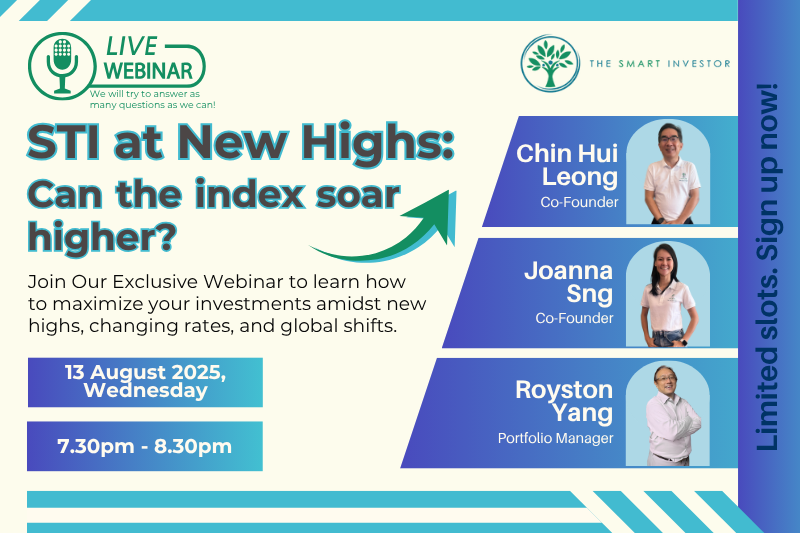The REIT sector is not having it easy with the twin challenges of high inflation along with surging interest rates.
Despite this, REITs can still grow their distribution per unit (DPU) through both organic and acquisitive methods.
It gets much tougher, however, if the property sub-type is also facing its own set of challenges.
The US commercial property sector is caught in such a situation now, adversely affecting the health and share prices of Singapore-listed US commercial REITs.
Year-to-date, Manulife US REIT (SGX: BTOU), or MUST, has seen its unit price shrivel by 58.5% to close at US$0.112.
Both Prime US REIT (SGX: OXMU) and Keppel Pacific Oak US REIT (SGX: CMOU), or KORE, have also fared poorly.
The former’s unit price has also plunged by 58.5% year-to-date to US$0.166 while the latter’s unit price has fallen by 34.1% to a near 52-week low of US$0.29.
Can these three REITs see the light at the end of the tunnel anytime soon?
Declining valuations for commercial property
At the root of the problem is the worrying decline in the values of US commercial property.
MUST first illustrated this when it reported a 10.9% year on year fall in its portfolio valuation from US$2.2 billion in 2021 to US$1.9 billion for 2022.
Just last week, the beleaguered REIT reported a further 14.6% decline in the valuation of its portfolio to US$1.6 billion as of 30 June 2023.
This decline in valuation was driven by higher vacancy levels in US office properties as more companies adopt hybrid work arrangements.
In tandem with this trend, higher concession packages also need to be doled out to entice potential tenants to rent space from these properties.
These problems are also exacerbated by the higher discount rates used to value the properties as interest rates have risen significantly in the past 18 months.
A quick look at Prime US REIT illustrates the same problem.
Prime US REIT saw its portfolio valuation fall by 6.7% year on year in 2022 to US$1.54 billion.
KORE’s portfolio, however, reported a marginal 0.2% year on year increase to US$1.42 billion over the same period.
MUST’s recent announcement states that US office valuations are “under pressure and likely to decline further in 2023”.
Two pieces of evidence support this.
The US office REIT sector’s unit prices are trading at a more than 30% discount to their net asset values.
Also, the Greenstreet Commercial Property Price Index estimates that office values had declined by 27% in the last 12 months ending 30 June 2023.
Should both Prime US REIT and KORE report valuations as of 30 June 2023, investors can expect to see similar declines as what MUST had announced.
A jump in leverage and breaching of financial covenants
With the decline in property valuations, the US commercial REITs have also reported a surge in their leverage ratios.
Recall that the gearing ratio is made up of the REIT’s total gross borrowings divided by its total assets.
Hence, a decline in the denominator will cause the leverage ratio to rise, all things being equal.
Back in 2022, MUST saw a jump in gearing from 42.8% to 48.8% because of this valuation decline.
Total borrowings had risen by just 6% year on year from US$971 million to US$1.03 billion.
With the further decline in MUST’s portfolio valuation, gearing leapt to approximately 57%, exceeding the 50% aggregate gearing limit set by Singapore’s central bank.
Leverage at Prime US REIT has also crept up from 37.9% in 2021 to 42.1% in 2022.
KORE’s gearing went up from 37.2% to 38.2% over the same period, the lowest of all three US commercial REITs.
Although MUST has not fallen afoul of the central bank as the breach was not under management’s control, one of its financial loan covenants was breached as a result of the valuation decline.
While Prime US REIT and KORE have not announced any loan covenant breaches for now, there is a possibility of this happening moving forward should property valuations continue their decline.
A double whammy
These problems are not going to go away anytime soon.
A recent interview with John Fish, head of construction firm Suffolk and former chairman of the board at the Federal Reserve Bank of Boston, helps explain why the sector is facing a classic double whammy now.
Aside from dwindling occupancy, he mentioned that the cost of capital to support these properties has “almost doubled”, making it much more expensive to maintain and upkeep these assets.
Get Smart: Conditions are unlikely to improve soon
Looking at the facts above, it is unlikely that the US commercial sector will see an improvement anytime soon.
The three REITs, therefore, will continue to be under pressure until the valuation of their portfolios stabilises.
Did you know there are 5 REIT sectors with a high potential for creating passive income? If you are building retirement wealth, this is crucial information. We have a new report that details all you need to know about them. Find out which sector to pay attention to, and see if you can fit them into your portfolio. Click HERE to download the guide here for free.
Follow us on Facebook and Telegram for the latest investing news and analyses!
Disclosure: Royston Yang does not own shares in any of the companies mentioned.






